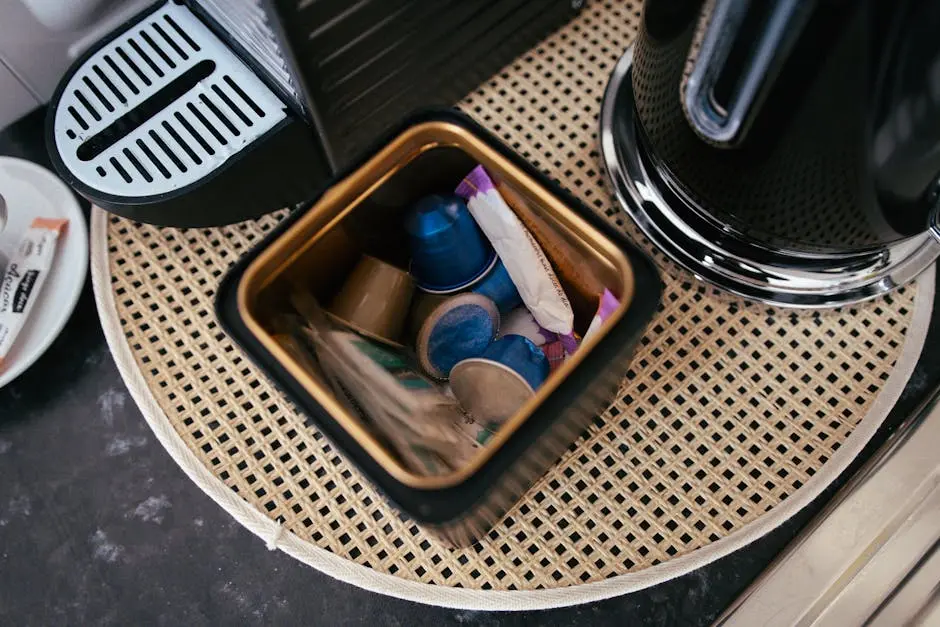Are Coffee Pods Eco-Friendly and Sustainable?
Coffee pods have taken the world by storm, offering a quick and convenient way to brew a single cup of coffee. However, as their popularity grows, so does the concern about their environmental impact. In this article, we'll delve into whether coffee pods are truly eco-friendly and sustainable, exploring their life cycle from production to disposal.
Understanding Coffee Pod Materials
Coffee pods are made from a variety of materials, each with its own environmental implications. The most common materials include plastic, aluminum, and biodegradable options. Plastic is widely criticized due to its persistence in the environment, as it doesn't decompose easily. Aluminum, while recyclable, requires significant energy in its production and recycling processes. Biodegradable pods, seen as the most eco-friendly alternative, are designed to break down more easily. However, they still require specific conditions to decompose properly.
Interestingly, manufacturers are beginning to innovate with plant-based materials, reducing reliance on traditional plastics. Indeed, the shift toward more sustainable materials reflects a growing consumer demand for environmentally conscious choices. But how significant is this impact on sustainability? Let's delve deeper into the production processes.
The Impact of Production Processes
The production of coffee pods involves several stages, each with environmental impacts. From the cultivation of coffee beans to the energy-intensive processes of aluminum smelting and plastic molding, every step contributes to the carbon footprint. It’s crucial to consider not only the raw materials but also the energy consumed in packaging and logistics. Moreover, the production of single-use packaging inherently leads to more waste.
Yet, some companies are making strides towards reducing this footprint by implementing energy-efficient manufacturing practices and optimizing their supply chains. By sourcing coffee beans from sustainable farms and utilizing renewable energy, producers can significantly lower emissions. Despite these efforts, the question remains: how does the packaging and disposal contribute to the overall sustainability of coffee pods?
Recycling Challenges and Options
Recycling coffee pods presents a unique set of challenges. The combination of materials—plastic or aluminum pods with organic coffee remnants—complicates the recycling process. Many recycling facilities are not equipped to handle such mixed materials efficiently. However, initiatives like dedicated pod recycling programs have emerged to address these issues. Consumers are encouraged to participate in these programs to ensure proper pod recycling.
In addition, some coffee companies are introducing compostable pods, which offer a more straightforward solution for consumers with home composting options. These advancements point towards a more optimistic future for eco-friendly coffee consumption. However, understanding and utilizing available recycling options is crucial for consumers looking to minimize their environmental impact.
For those interested in supporting sustainable practices, choosing brands that prioritize environmentally friendly disposal and recycling processes is essential. This simple action can significantly reduce the environmental burden of coffee pod waste.
Comparing Coffee Pods to Other Brewing Methods
When we compare coffee pods to traditional brewing methods, the environmental impact becomes clear. For instance, brewing a cup with a French press or pour-over requires no disposable materials, reducing waste substantially. These methods generate minimal packaging waste and rely on reusable equipment. However, they may consume more water and energy in some cases due to cleaning requirements.
Nevertheless, the convenience and consistency offered by coffee pods are unrivaled. While traditional methods have their benefits, including reduced packaging waste, coffee pods provide a significant advantage in terms of ease and speed. It's a trade-off that consumers need to evaluate based on their priorities for convenience against ecological responsibility.
Tips for Making Eco-Friendly Coffee Pod Choices
For eco-conscious coffee lovers, making informed choices can help reduce the environmental impact of their coffee consumption. Start by selecting brands that offer recyclable or compostable pods and support recycling programs. Aim for options that use sustainable materials or have certification labels indicating eco-friendly practices.
Consider brewing methods that balance convenience with sustainability, such as reusable pods that can be filled with coffee grounds of your choice. Additionally, purchasing from companies that prioritize ethical sourcing—like fair trade and organic certifications—can support both environmental and social sustainability in the coffee industry.
Given the balance between convenience and sustainability, consumers can make better choices by researching and supporting sustainable brands. Learn more about making responsible coffee choices by visiting our sustainable coffee selection.
Wrapping Up the Coffee Pod Sustainability Debate
While coffee pods offer undeniable convenience, their environmental footprint is a matter worthy of consideration. By being informed about material types, recycling options, and sustainable purchasing choices, coffee lovers can savor their brew with a lighter impact on the planet.


